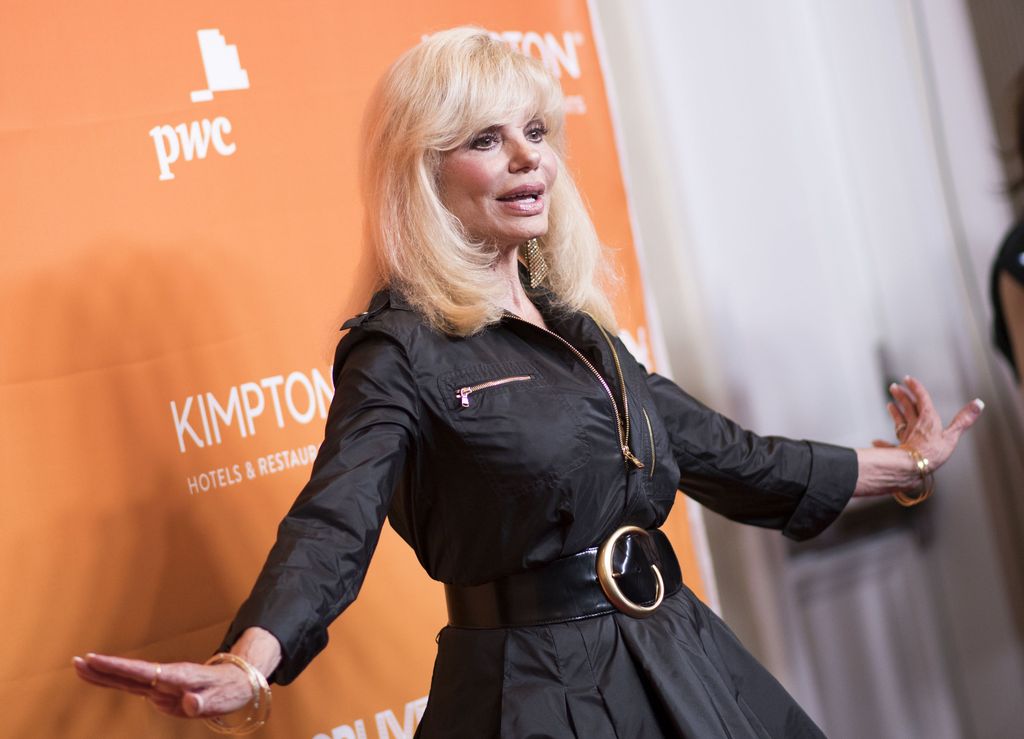
Loni Anderson, the acclaimed actress best known for her iconic portrayal of the intelligent and glamorous receptionist Jennifer Marlowe on the popular 1970s and 1980s television sitcom “WKRP in Cincinnati,” died on Sunday, August 3. She was 79 years old. The passing occurred at a Los Angeles hospital at noon Pacific Time, following “an acute prolonged illness,” as confirmed by her representative, Cheryl J. Kagan.
Anderson, who would have celebrated her 80th birthday just days later on August 5, was surrounded by her devoted family during her final moments. In a poignant statement released shortly after her death, her family expressed their profound grief, stating, “We are heartbroken to announce the passing of our dear wife, mother and grandmother.” Her career, marked by a blend of captivating charm and undeniable talent, left an indelible mark on television.
Her breakout role as Jennifer Marlowe on CBS’s “WKRP in Cincinnati” cemented her status as a household name. The comedy, which aired from 1978 to 1982, centered on the eccentric staff of a struggling AM radio station in Ohio attempting to revitalize its image by embracing rock music. Anderson’s character, a blonde, high-heeled figure of sophistication, was far more than mere window dressing.
Indeed, the character of Jennifer Marlowe was initially conceived in a more stereotypical fashion, one which Anderson strongly resisted. She insisted that the role be significantly rewritten before she would accept it, demonstrating an early commitment to portray complex female characters. During a 2020 interview, Anderson recounted her refusal, explaining, “I went in and sat on my little soapbox and said, ‘I don’t want to play this part because she’s just here to deliver messages and is window dressing.’”

Her steadfast stance prompted Hugh Wilson, the show’s creator, to engage with her vision. Wilson, according to Anderson, responded by saying, “Well, how would you do it?” She then elaborated on her concept for Jennifer, advocating for a character who, despite her striking appearance, was undeniably sharp and capable. This led to Wilson’s pivotal decision: “He said, ‘Let’s make her look like Lana Turner and be the smartest person in the room.’”
This reinterpretation was crucial in defining Jennifer Marlowe as the antithesis of the prevailing “dumb blonde” stereotype often seen on television at the time. Jennifer’s efficiency and intelligence were frequently depicted as the driving forces that kept the chaotic radio station functioning, often compensating for the incompetence of others around her. She famously refused to engage in tasks such as taking dictation, typing letters, or making coffee.
Anderson’s nuanced portrayal earned her significant critical acclaim, including two Primetime Emmy nominations after the second and third seasons of the series in 1980 and 1981. Although she ultimately lost to Loretta Swit of “M*A*S*H” and Eileen Brennan of “Private Benjamin,” respectively, her performance was widely recognized. She also received three Golden Globe nominations for her work on “WKRP in Cincinnati.”
Beyond critical accolades, Anderson’s image as Jennifer Marlowe made her a prominent cultural figure. A pinup photograph of the actress, captured in a skimpy white bikini, became one of the best-selling posters of the 1970s, solidifying her status as a sex symbol of the era. Despite this public perception, Anderson actively sought to be recognized for her acting prowess rather than solely her physical appeal.
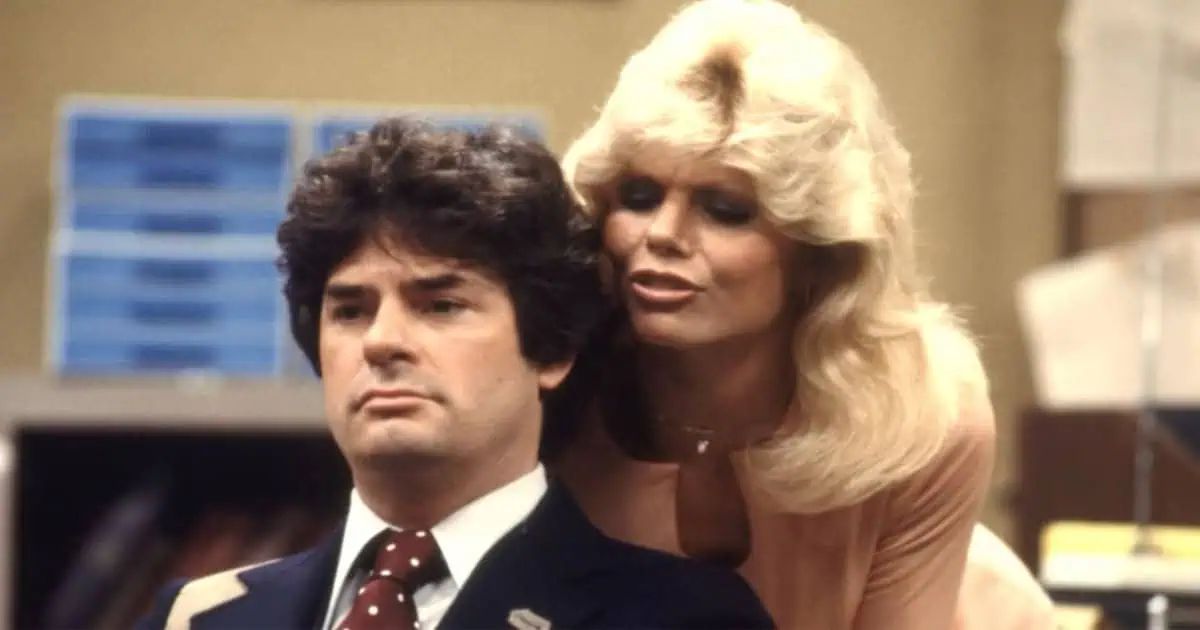
She reflected on this aspect of her public image in a 2021 interview, stating, “I never thought I would be Loni Anderson, sex symbol. But I embrace it.” She further emphasized the importance of her creative input on “WKRP,” adding, “I felt so instrumental that they listened to the concept of this glamorous person who could also be the smartest person. And you know what? It was wonderful. I had a huge female following because of that. And that has always been one of my most treasured memories, knowing that it did have an effect on women.” Her ability to balance glamour with substance resonated deeply with audiences.
Born Loni Kaye Anderson on August 5, 1945, in St. Paul, Minnesota, her early life offered glimpses into the talent and ambition that would later define her career. Her father, Klaydon Carl Anderson, was an environmental chemist, and her mother, Maxine Hazel Kallin, worked as a model, perhaps foreshadowing Loni’s own path into the public eye.
Anderson, a natural brunette, later dyed her hair platinum blonde, a signature look that would become synonymous with her most famous character. She fondly recalled her original hair color, noting, “I loved being a brunette… it was exotic, people weren’t quite sure what nationality I was, there was a mystery. When acting, I could be the bad lady.”
Her educational background included art studies at the University of Minnesota, and she was a 1963 graduate of Alexander Ramsey Senior High School in Roseville. Before her acting career fully blossomed, Anderson entered the beauty pageant circuit, earning various titles. She was a runner-up in the 1964 Miss Minnesota competition and also collected accolades such as Miss Thermo-Jac Clothing, Miss County Style Ford, and Queen of the Hole-In-One.
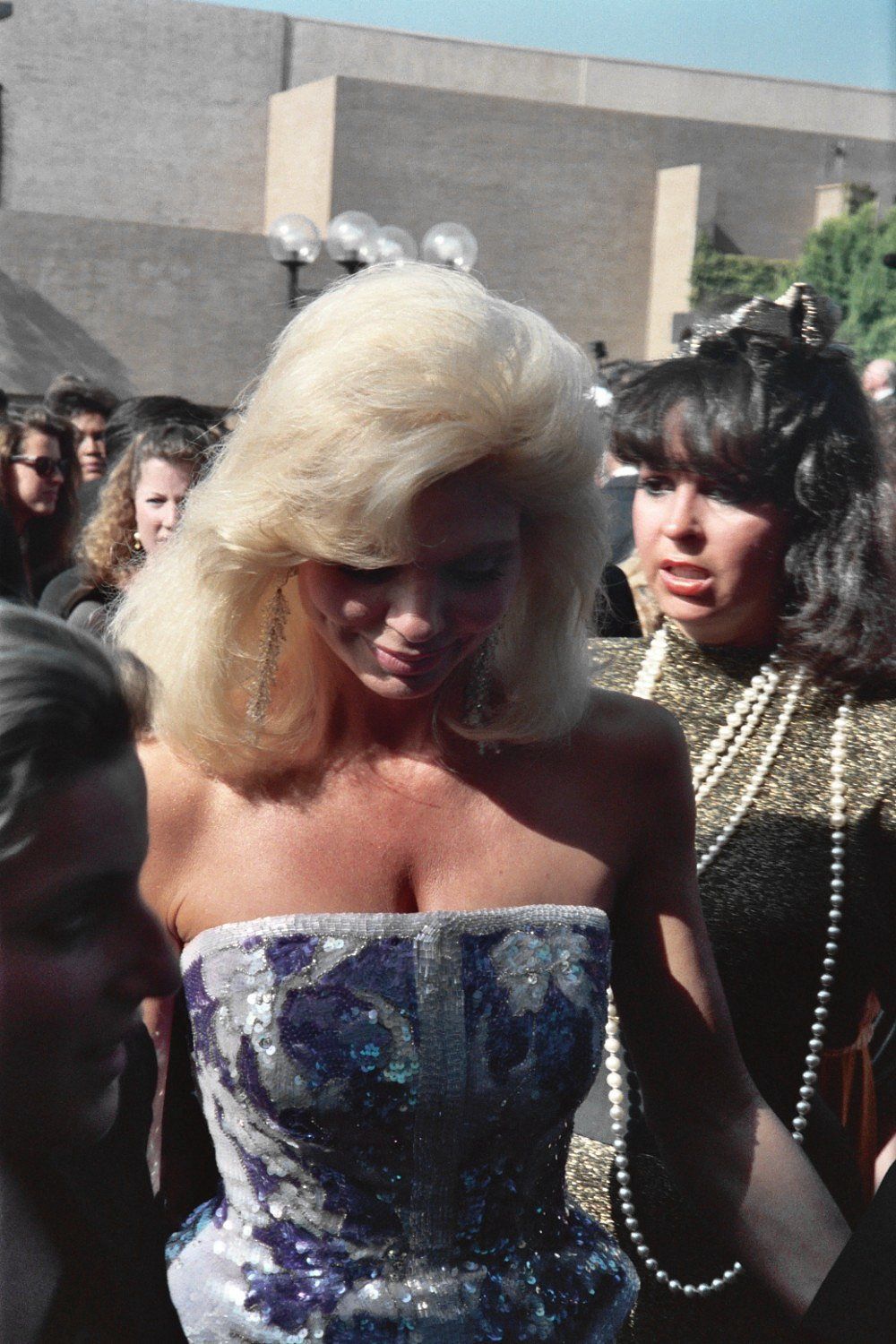
Anderson transitioned into acting with early appearances in local commercials and theater productions. A pivotal moment came when she donned a blond wig to play Billie, a role made famous by Judy Holliday, in a Minneapolis stage production of “Born Yesterday,” which she credited with kickstarting her career. Veteran actor Pat O’Brien, with whom she performed in another play, encouraged her to pursue opportunities in Hollywood.
In 1975, Anderson moved to Los Angeles with her then-husband, fellow actor Ross Bickell, to chase their aspirations in the film and television industry. Prior to landing her defining role, she appeared in a series of minor parts on popular 1970s television shows, including “Barnaby Jones,” “The Bob Newhart Show,” “Three’s Company,” “S.W.A.T.,” “Police Woman,” “The Invisible Man,” “Harry O,” “Phyllis,” “Police Story,” and “The Love Boat.”
Notably, Anderson auditioned for the role of Chrissy Snow on “Three’s Company,” a part that eventually went to Suzanne Somers. John Ritter, one of the show’s stars, later remarked that Anderson was “too beautiful, too savvy,” for the role, believing that “No one would believe she couldn’t live in her own apartment, that she would have to struggle to get the rent paid.” Despite not securing the lead, her audition did lead to guest appearances in two episodes of the show, which further raised her visibility.
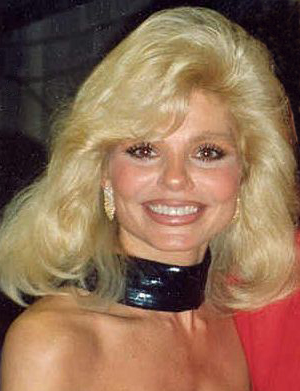
It was Ross Bickell, her second husband, who had auditioned for the role of Andy Travis on “WKRP in Cincinnati,” who first informed her about the opportunity to play Jennifer Marlowe. After securing the role, Anderson would go on to star in all but one of the show’s 90 episodes during its successful four-season run through April 1982. In the summer of 1980, her growing popularity allowed her to negotiate a significant salary increase from the “WKRP” producers, which she successfully obtained.
Following her triumph on “WKRP,” Anderson cultivated a reputation as the “Queen of Made-for-TV Movies,” starring in numerous telefilms that showcased her versatility. Among her notable roles was her portrayal of the ill-fated Hollywood sex siren Jayne Mansfield in the 1980 telefilm “The Jayne Mansfield Story,” where she co-starred with an then-untested Arnold Schwarzenegger, who played Mansfield’s second husband, Mickey Hargitay.
She continued to tackle roles inspired by real-life figures, depicting another doomed Hollywood personality in 1991’s “White Hot: The Mysterious Murder of Thelma Todd.” From 1988 to 1990, she also headlined television movie remakes of classic films, taking on the Gene Tierney role in “Leave Her to Heaven,” the Barbara Stanwyck part in “Sorry, Wrong Number,” and a role in “Three Coins in the Fountain.”
Her career in the 1980s also included starring alongside Lynda Carter as private detectives in NBC’s “Partners in Crime” in 1984, a series that ran for just 13 episodes. In the same year, she appeared as herself in “The Lonely Guy,” starring Steve Martin. Anderson reunited with “WKRP” creator Hugh Wilson in 1986 for the NBC comedy “Easy Street,” where she played a former showgirl who inherits a fortune, much to the chagrin of her late husband’s sister; this series lasted for one season.
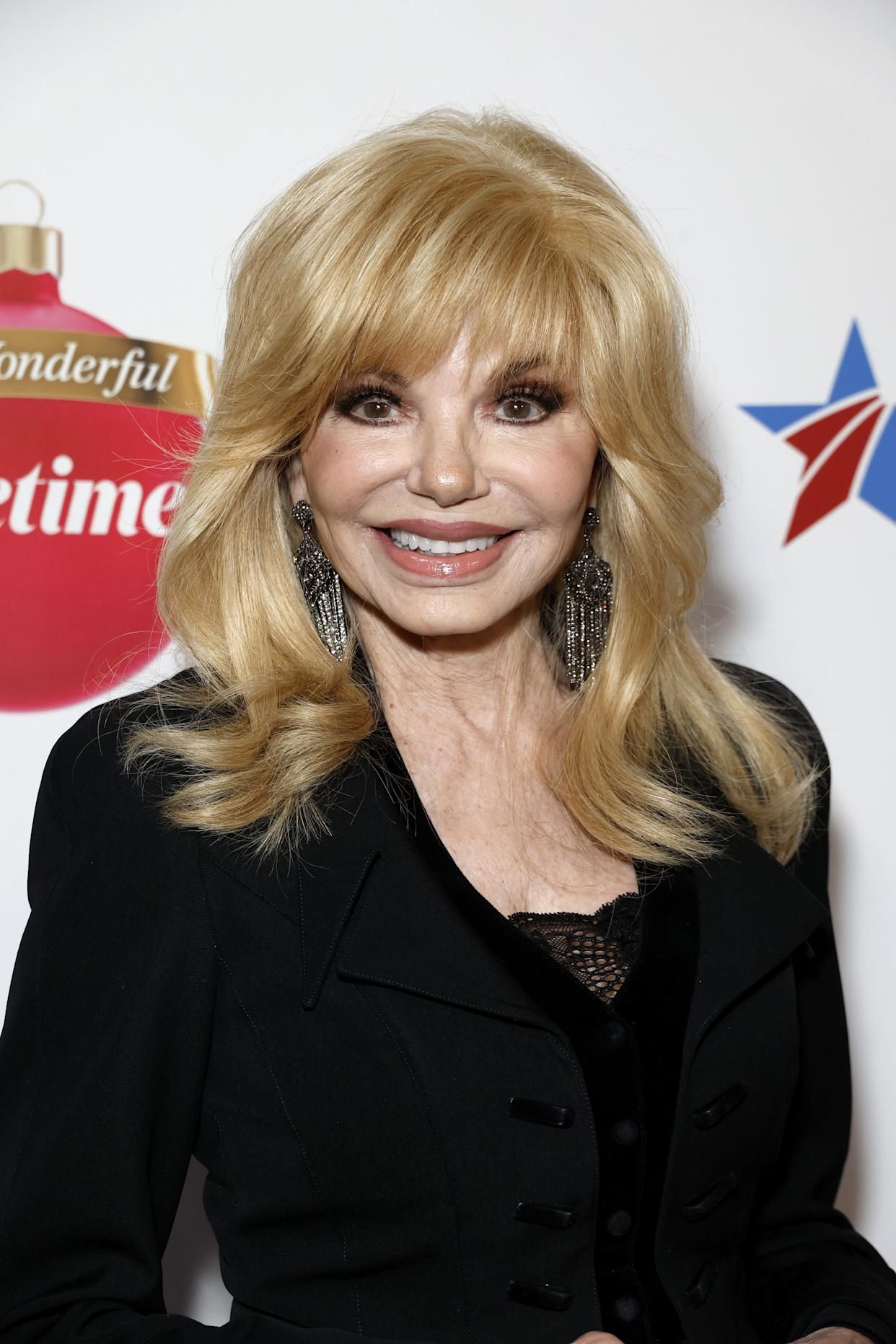
Anderson’s personal life, particularly her marriage to and subsequent divorce from movie star Burt Reynolds, frequently captured the attention of the tabloids. The couple first met in 1981 on “The Merv Griffin Show,” a time when Anderson was still married to Ross Bickell and Reynolds was involved with actress Sally Field. They began dating a year later, in 1982.
On April 29, 1988, Anderson and Reynolds exchanged vows at Reynolds’ expansive 160-acre ranch in Jupiter, Florida. During the ceremony, Reynolds presented her with a seven-carat ring, which he had personally designed—a distinctive canary yellow diamond encircled by smaller white diamonds. At the time of their marriage, Anderson was 41 and Reynolds was 52. Actor Robby Benson, a guest at the wedding, famously remarked, “We all cried. It couldn’t have been lovelier. They looked like the perfect couple, the kind you see on the top of a wedding cake, only bigger.”
Their union, however, was also marked by public scrutiny and eventual acrimony. They starred together on the big screen in the 1983 comedy “Stroker Ace,” where Anderson played Sunday school teacher Pembrook Feeny to Reynolds’ NASCAR driver, directed by Hal Needham. They also lent their voices to animated pooches in “All Dogs Go to Heaven” (1989) and appeared in an episode of Reynolds’ short-lived ABC series “B.L. Stryker” in 1990.
Despite their on-screen collaborations, their marriage began to unravel, culminating in a highly publicized divorce. Reynolds served her with divorce papers in June 1993, initiating a contentious court battle over their adopted son, Quinton, whom they had welcomed weeks after his birth in 1988. The split was characterized by Reynolds publicly accusing Anderson of infidelity and deeming her unfit to raise their son, while Anderson countered with accusations that Reynolds was having an affair, was hooked on painkillers, and had abused her.

Reynolds, at one point, commented on the intense public interest surrounding their separation, telling reporters in 1994, “I’m very happy that we were able to sell papers for a year and a half. Why that doesn’t translate into money, I don’t know. … I’m glad America is curious about us.” The divorce became official in December 1994, after which Reynolds filed for Chapter 11 bankruptcy protection two years later. Their financial ties were only fully severed in September 2015, when Reynolds issued Anderson a check for $154,520.
The highly publicized nature of their breakup even became fodder for popular culture, with David Letterman joking on the inaugural “Late Show” broadcast on CBS on August 30, 1993, that “I’m more focused since my break-up with Loni” as part of his Top 10 List. Despite the bitterness of their divorce, Anderson retained a measure of fondness for Reynolds in later years. Following his death in 2018, she remembered him warmly, praising him as “a wonderful director and actor.”
She issued a statement at the time, reflecting on their shared history: “He was a big part of my life for 12 years and Quinton’s loving father for 30 years. We will miss him and his great laugh.” Anderson even spoke at his funeral and indicated she would keep his ashes, a testament to the complex and enduring bond they shared through their son. She also stated that she and Reynolds would occasionally meet with Quinton.
In 1995, Anderson published her autobiography, “My Life in High Heels,” which became a New York Times bestseller. She described the book as being about “the growth of a woman, a woman who survives.” She candidly discussed the themes within its pages, stating that it covered “my childhood, the death of my parents, my career, my divorces, and my children. Then of course, the trauma of my marriage to Burt.”
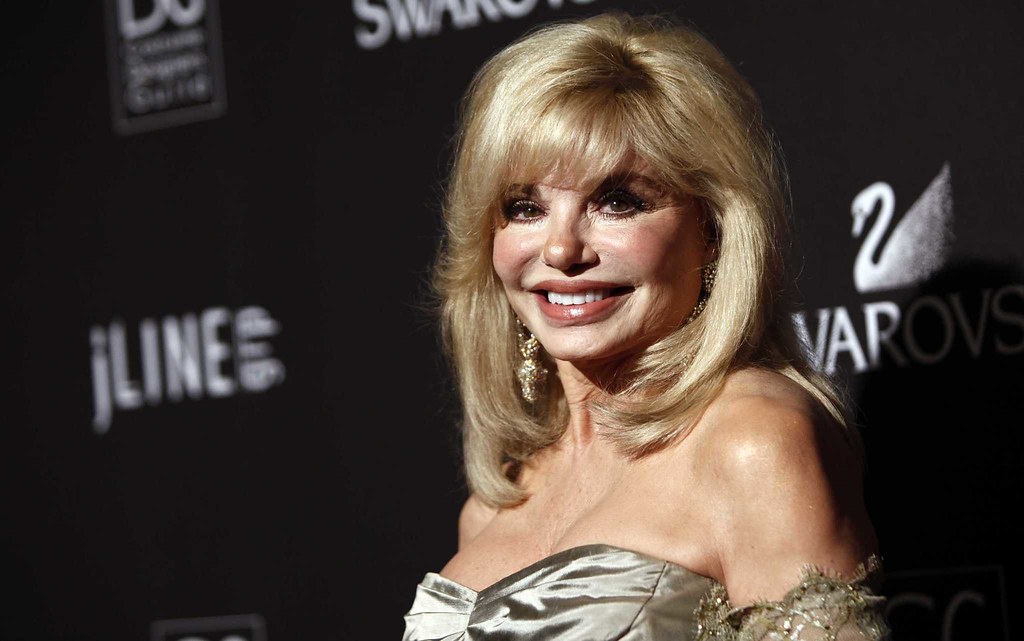
When promoting her memoir, Anderson emphasized her commitment to honesty, telling The Associated Press, “I think if you’re going to write about yourself, you have to do it warts and all. You may not even tell the nicest things about yourself, because you’re telling the truth.” This approach provided readers with an unvarnished look into her life, including its challenges and triumphs.
Anderson continued her prolific acting career well into the later decades. She voiced Flo in the beloved animated film “All Dogs Go to Heaven” in 1989 and co-starred with Chris Kattan and Will Ferrell in the raucous comedy “A Night at the Roxbury” in 1998. Her television work during this period included a conniving role as Teri Carson on “Melrose Place” in 1996 and Tori Spelling’s materialistic mother in “So Notorious” in 2006.
She also made appearances in popular series such as “Sabrina the Teenage Witch,” “Clueless,” “The Mullets,” and the queer web series “My Sister Is So Gay.” Anderson even returned to her most famous role for two episodes of “The New WKRP in Cincinnati” from 1991 to 1992 and joined the third and final season of the NBC sitcom “Nurses” in 1993. Her most recent screen credit was in Lifetime’s 2023 film “Ladies of the ‘80s: A Divas Christmas,” where she co-starred with Linda Gray, Donna Mills, Morgan Fairchild, and Nicollette Sheridan.
Anderson was married four times. Her first marriage was to Bruce Hasselberg in 1964, a union that effectively ended in months but resulted in the birth of her daughter, Deidra. She later married actor Ross Bickell, and their marriage ended in 1981. Her third marriage was to Burt Reynolds, which concluded in 1994. In May 2008, she found enduring companionship with folk singer and musician Bob Flick of The Brothers Four, whom she had first met 45 years prior. She is survived by her husband, Bob Flick, and her children, daughter Deidra (and son-in-law Charlie Hoffman) and son Quinton (Quinton Anderson Reynolds).
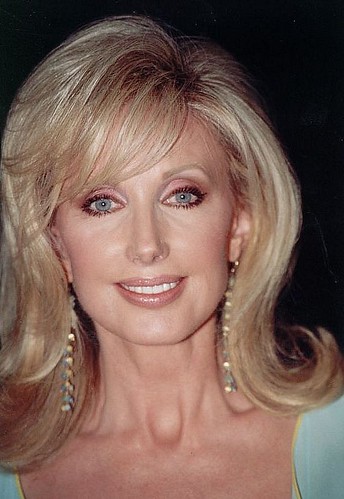
Her family also includes stepson Adam Flick (and his wife Helene), and four grandchildren: McKenzie and Megan Hoffman, along with Felix and Maximilian Flick. The news of Anderson’s passing prompted an outpouring of tributes from colleagues and friends who remembered her warmth, wit, and professional dedication. Actress Morgan Fairchild, who co-starred with Anderson in “Ladies of the ‘80s: A Divas Christmas” and past Bob Hope specials, shared her sorrow.
Fairchild posted on X, stating, “I am heartbroken to hear of the passing of the wonderful Loni Anderson! The sweetest, most gracious lady! I’m just devastated to hear this. Love & condolences to Bob (who was on set every day w her) & her kids and grandkids, who she adored.” Veteran actress Barbara Eden also conveyed her deep sadness, writing, “Like many, I am absolutely stunned and heartbroken. Our friendship has spanned many years, and news like this is never easy to hear or accept.”
Eden continued, reflecting on Anderson’s character, “What can I say about Loni that everyone doesn’t already know? She was a real talent, with razor smart wit and a glowing sense of humor… but, even more than that, she had an impeccable work ethic. Even beyond that, Loni was a darling lady and a genuinely good person… I am truly at a loss for words.” These sentiments highlighted Anderson’s multifaceted personality, both as a performer and as an individual.
Steve Sauer, president and CEO of Media Four and Anderson’s manager for three decades, offered a heartfelt statement underscoring her commitment to both her career and her family. He praised her as “a class act. Beautiful. Talented. Witty. ALWAYS a joy to be around.” Sauer further elaborated, “She was the ultimate working mother. Family first … and maintained a great balance with her career. She and I had wonderful adventures together that I shall forever cherish. I will especially miss that infectious chuckle of hers.”
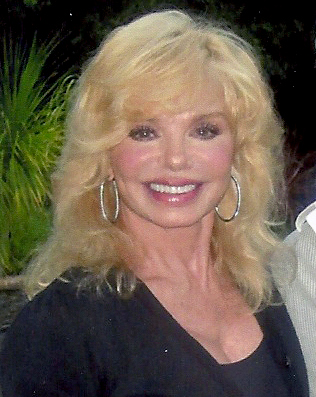
A private family service for Loni Anderson is scheduled to be held at the Hollywood Forever Cemetery. A public celebration of her life is planned for a future date, allowing more friends, colleagues, and admirers to honor her memory. In lieu of flowers, the family has requested that contributions in her memory be made to the National Lung Health Education Program and/or the American Cancer Society, reflecting a desire for her legacy to support vital health initiatives.
Loni Anderson’s career was a testament to her unique ability to infuse glamour with intelligence, challenging the superficiality often associated with her early image. She was a resilient figure who navigated the complexities of Hollywood stardom and personal life with a blend of grace and candor. Her insistence on portraying a “smart blonde” on “WKRP in Cincinnati” had a lasting impact, paving the way for more nuanced female characters on television.
Through her roles and her autobiography, she offered an authentic glimpse into her journey, marked by both public triumphs and private struggles. She was an actress who embraced her journey, taking “whatever my career threw at me,” while remaining dedicated to her family. Her infectious charm, sharp wit, and indelible presence will undoubtedly continue to resonate with those who admired her work and her spirit, ensuring her place in the annals of television history.



